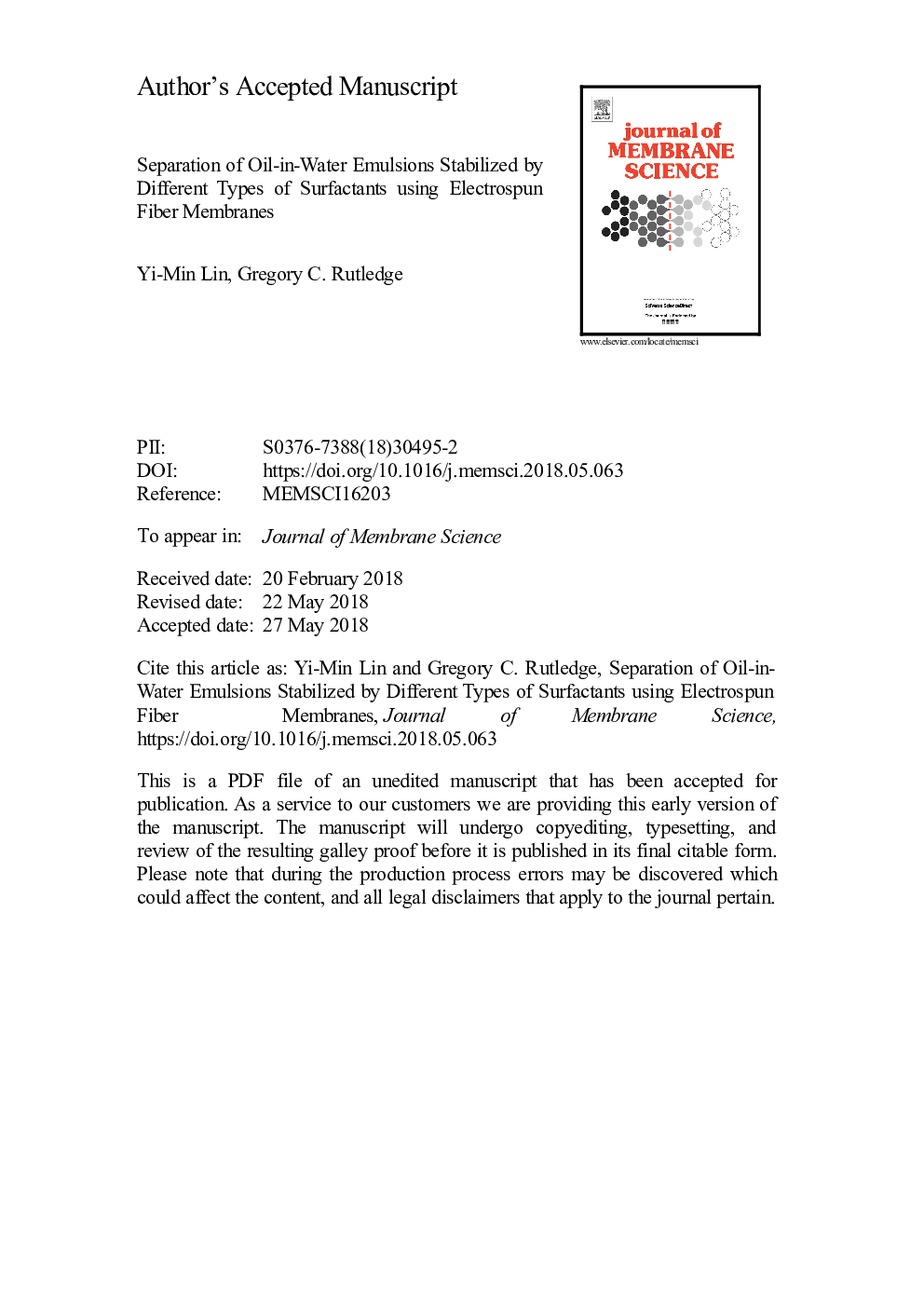| کد مقاله | کد نشریه | سال انتشار | مقاله انگلیسی | نسخه تمام متن |
|---|---|---|---|---|
| 7019689 | 1455936 | 2018 | 34 صفحه PDF | دانلود رایگان |
عنوان انگلیسی مقاله ISI
Separation of oil-in-water emulsions stabilized by different types of surfactants using electrospun fiber membranes
ترجمه فارسی عنوان
جداسازی امولسیون های نفت در آب با استفاده از انواع مختلف سورفکتانت ها با استفاده از غشاهای فیبر الکترو اسپن
دانلود مقاله + سفارش ترجمه
دانلود مقاله ISI انگلیسی
رایگان برای ایرانیان
کلمات کلیدی
موضوعات مرتبط
مهندسی و علوم پایه
مهندسی شیمی
تصفیه و جداسازی
چکیده انگلیسی
The compositions of oil-in-water emulsions encountered in industrial processes or in the environment vary widely in the nature of surfactants that stabilize them. This variety creates challenges for applications of membrane separation. Electrospun fiber membranes have shown high permeability and improved robustness against fouling in emulsion separation, but the interaction between emulsions and the membrane, and the fouling mechanism, remains unclear. In this paper, electrospun polyamide membranes were challenged by model emulsions of dodecane stabilized by anionic, cationic, non-ionic and zwitterionic surfactants in both dead-end and cross-flow filtration configurations under constant pressure of 2â¯psi. The membrane was shown to have high oil rejection (92.7â¯Â±â¯1.5%), sufficient to meet EPA's regulatory limit, when separating emulsions stabilized by anionic surfactant in cross-flow filtration, while maintaining a steady flux of 44.3â¯Â±â¯2.6 LMH. Analysis of permeate flux and oil rejection revealed that the types of surfactants influenced the membrane fouling in both dead-end and cross-flow systems, but in different ways. Fouling in dead-end filtration was found to be a function of the electrostatic interactions between the oil droplets and the membrane, while fouling in cross-flow filtration was mainly determined by the hydrophilic/hydrophobic interactions due to the adsorption of surfactants at the interfaces. Blocking filtration models are used to corroborate these findings and illustrate the transition between modes of fouling in dead-end filtration. A de-fouling process was found when separating emulsions stabilized by cationic surfactant in dead-end filtration, which was attributed to coalescence of oil droplets at the membrane surface, based on a kinetic model and direct observation. These results indicate that not only membrane-foulant but foulant-foulant interactions can influence the membrane fouling.
ناشر
Database: Elsevier - ScienceDirect (ساینس دایرکت)
Journal: Journal of Membrane Science - Volume 563, 1 October 2018, Pages 247-258
Journal: Journal of Membrane Science - Volume 563, 1 October 2018, Pages 247-258
نویسندگان
Yi-Min Lin, Gregory C. Rutledge,
